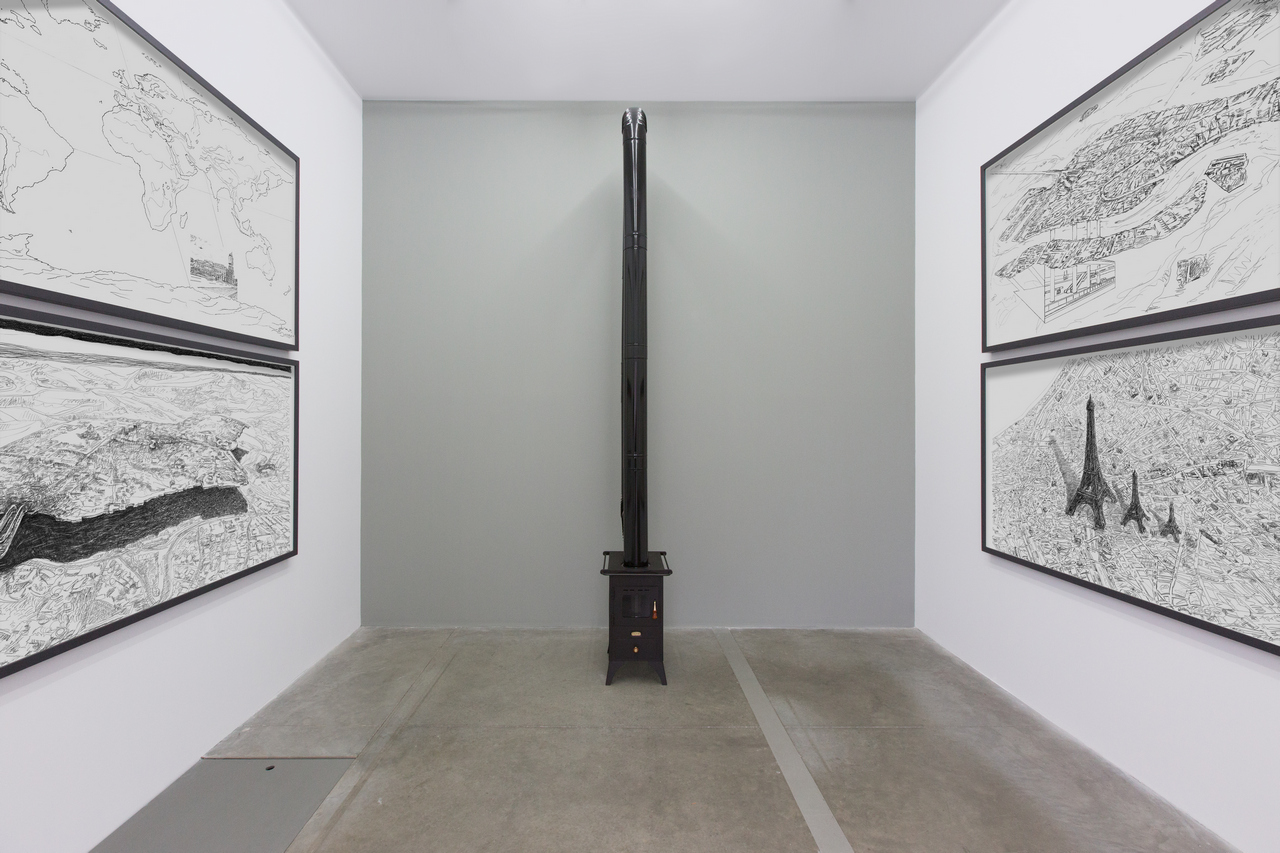
Dystopian cozy: An artist’s guide to eternal sunshine
Dystopian Cozy, Luchezar Boyadjiev’s first solo show at SARIEV Contemporary takes a look towards one of the artist’s favorite themes – the city - as a territory, as a private and shared space, as a way of living and a place of memory.
13 February 2018, text Desislava Mileva
For twenty years now, Luchezar Boyadjiev has not stopped working with the city. His involvement in the expert-artistic council of Sofa Municipality, his participation in the Visual Seminar of the Institute of Contemporary Art – Sofia, the realization of artistic projects including photography, graphic works, installations and performances in several cities around the world are only part of the expressions of his heterogeneous but constant interest in the urban space and visual culture. One should not also forget his tours in the city of Sofia, part of the educational platform "Introduction to contemporary art" which offered a new approach to exploring and seeing the public spaces of the Bulgarian capital.
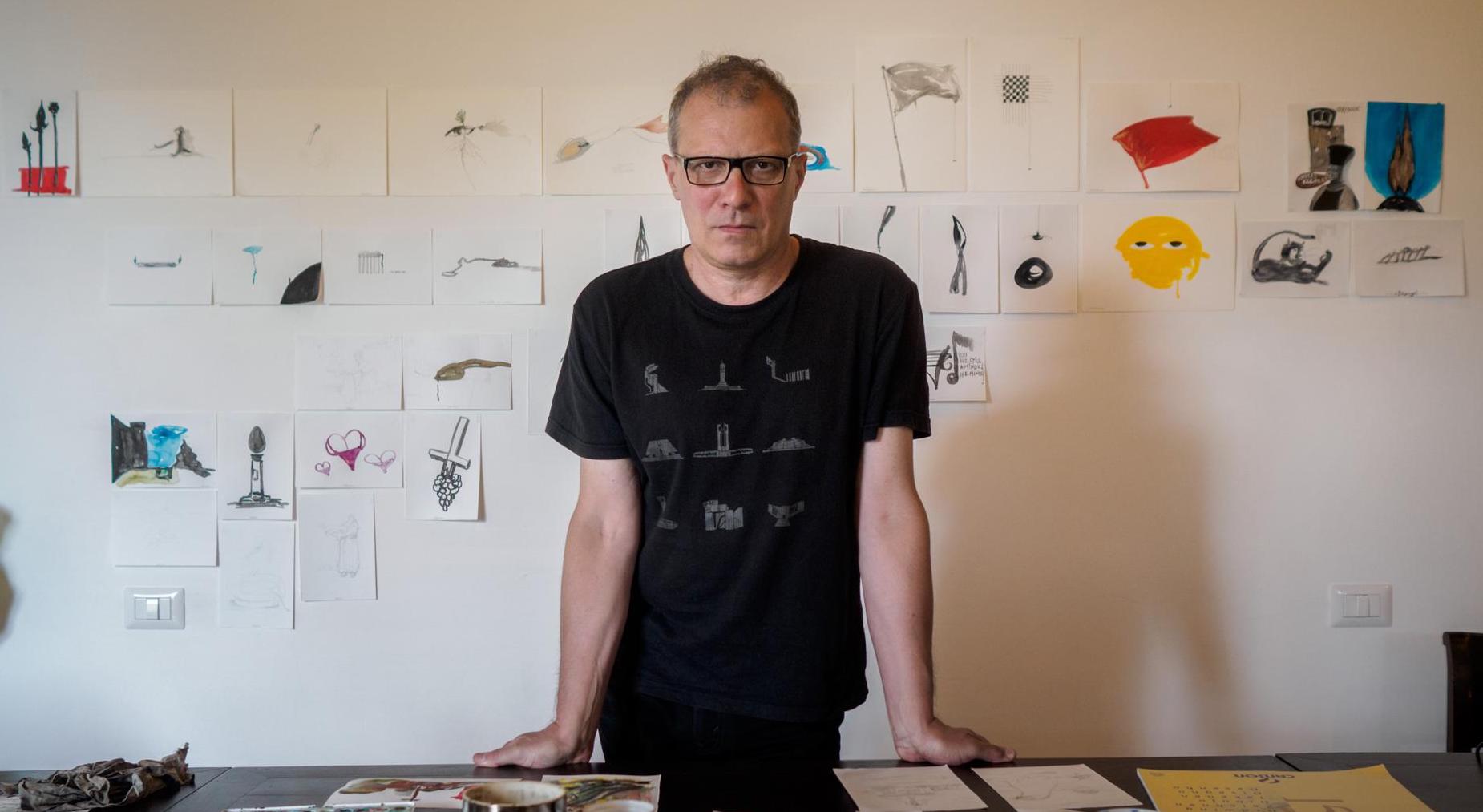
Boyadjiev says he finds it difficult to portray himself as a "Van Gogh-type artist who suffers in the province" and deems it "important for a contemporary artist to be at the center of the “quarrel”” which he claims is taking place in the cities. In them, he sees "both a goal and means, the place where the relationship between art and the public is formed at highest speed, [...] where all the effects and defects of contemporary life are accumulated and are visible everywhere – from civil activities and relations with authorities, to ecology, demography, new technologies, and all the way to the artist’s inner life". It is namely this attitude of the artist, strained by personal experiences, professional observations, questions about memory, mixed with the wit and irony typical for his work that urges the observer of “Dystopian Cozy” towards series of visual and mental conundrums with an unlimited set of possible answers.
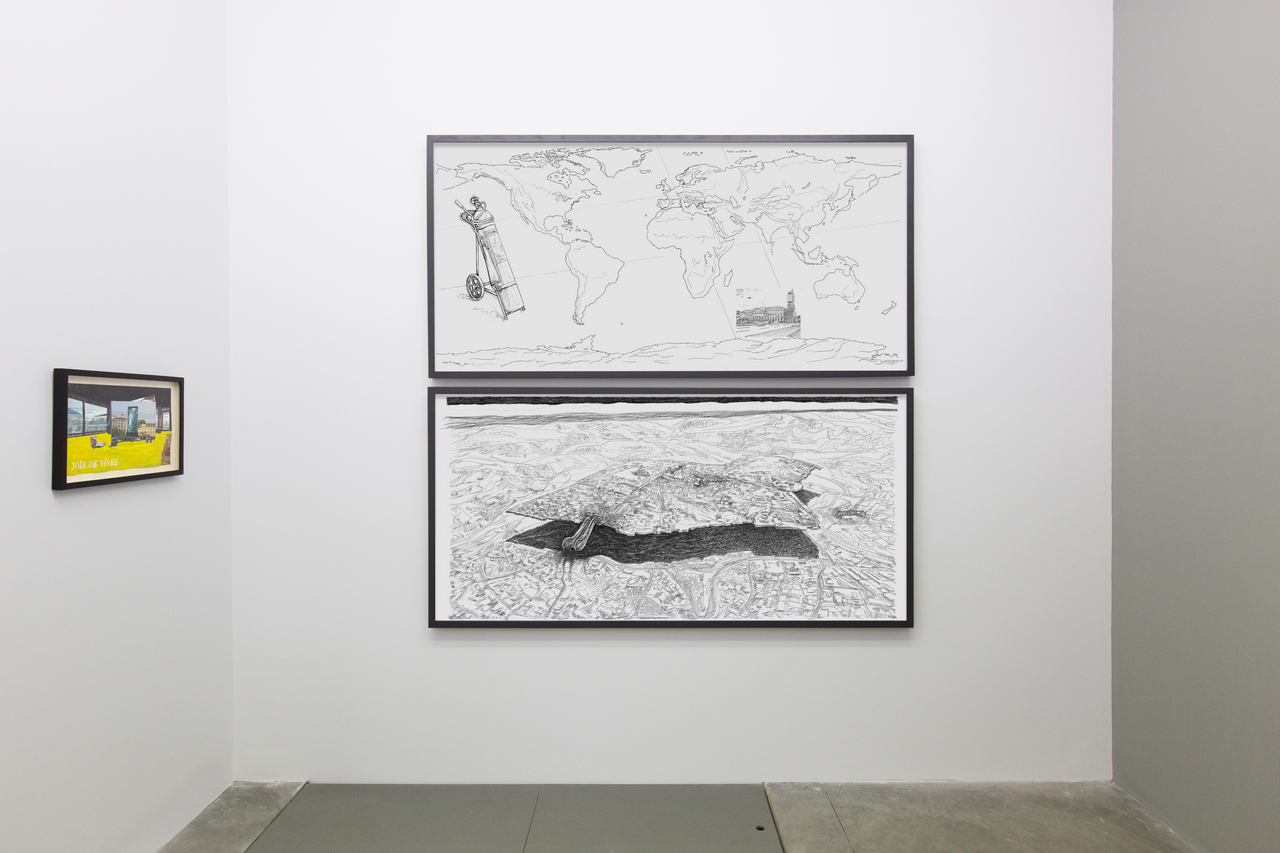
The title of the exhibition sets a start for the process. The questions of coziness and dystopia and their possible existence together lead to a number of intrinsically related political, economic, religious and cultural systems that Boyadjiev chooses to examine in a series of drawings realized between 2004 and 2018. Placed as main accent in the exhibition, the drawings explore the connections between the ways of inhabiting a city, the sharing of space and the memory within, and propose, in the artist's words, "utopian solutions for the dystopic problems of some cities", thus offering rather a comment on the present than a vision of the future.
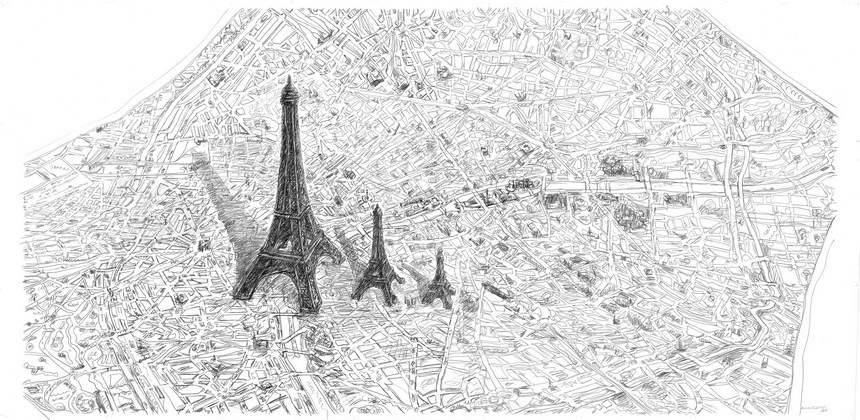
"In my work, the dystopia is really here. The seemingly absurd proposals are aimed at transforming thinking, turning the perspectives – not necessarily into the future, but at resolving some dilemma today. For example, in Jerusalem, the tension between people is almost palpable; and Paris, a city that seems unable to truly see itself and thus needs to be redefined, reinvented in order to become not only an attractive destination for tourism and migration, but also to offer equal access to itself to all its residents and visitors."
.jpg)
In the vicinity of these drawings, Boyadjiev, not unlike Lorenzetti at the Palazzo Pubblico in Siena, offers as well visions of the Utopian. New-found Flag for a Missing Country expands the geographic perimeter and leads with its visual elements – the shiny golden-brown fabric and green palm leaves –to the myths of the island as a microcosm and a suitable terrain for experimenting with various utopian scenarios. The work, along with the installation Eternal Sunshine, which is nothing else but a wood stove, create, in the words of the author, "something like a double utopia of the dream, designed to inspire the idea of coziness and warmth in a world increasingly immposible for living, in which people are becoming more and more divided and seem to forget about simple things like "the eternal sunshine" that every utopian idea suggests at least on a metaphorical level."
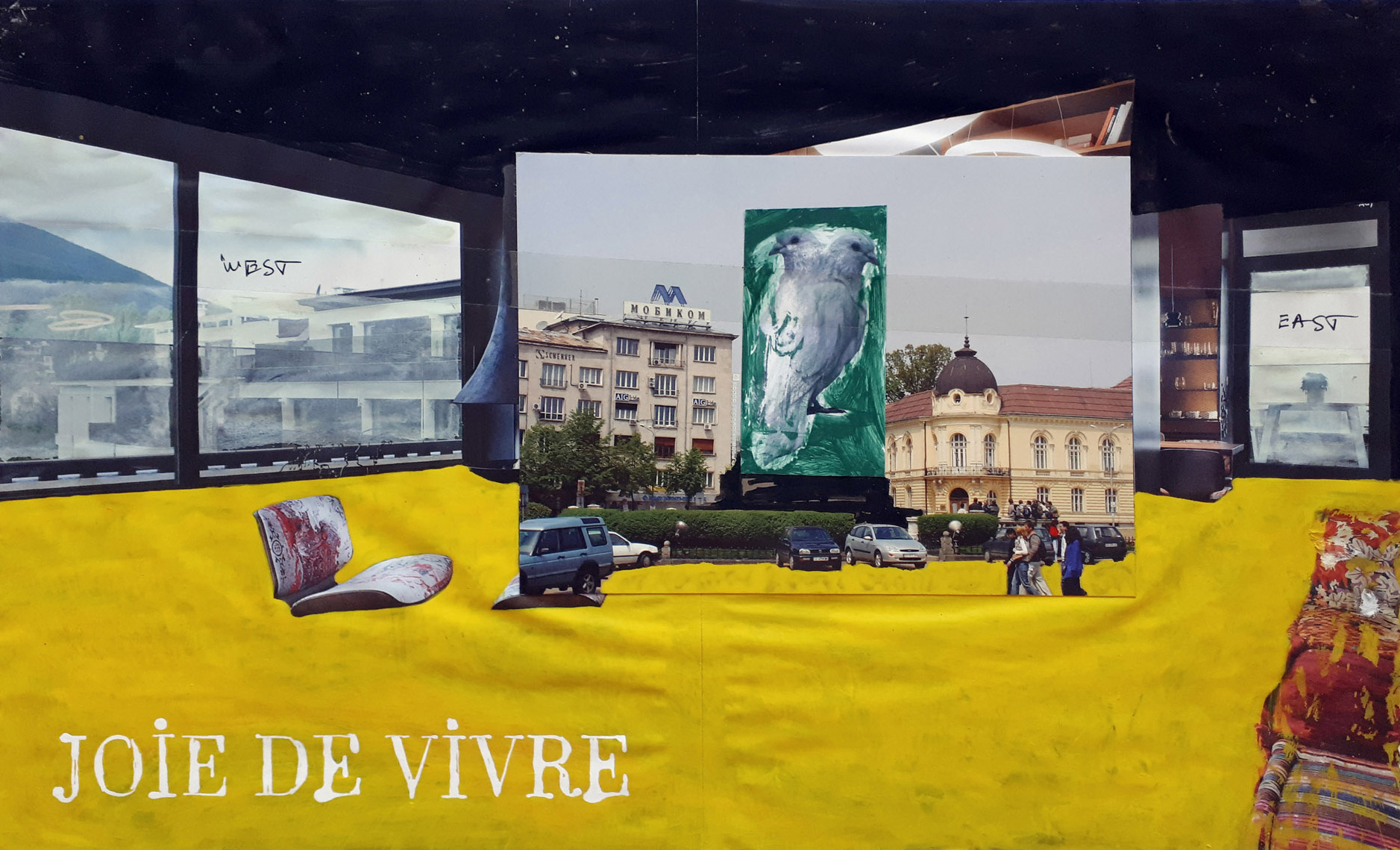
The exceptionally colorful collage Joie de Vivre seems to be seeking to reconcile the utopia with the dystopia, equally inherent, according to Boyadjiev, to man and to reality. The two-headed pigeon, erected more as a connection than as a utopias and turned into dystopias. Furthermore, the expression, in truly French fashion, contains the idea of a possible enjoyment of life, even in the worst of times and thus offers a pleasant dose of inner coziness.
Playful and witty, Boyadjiev's dystopian-utopian suggestions explore nevertheless, different processes and changes happening in modern cities and societies and play masterfully with the intertwining of action and reality, possible and necessary. In observing them, one could be easily tempted to visualize the consequences of such decisions, going as much to utopia as to dystopia, considering what the way to the hell is paved with. It is, however, not the possible scenario, but the path that goes up there that interests the artist. "It depends what we perceive as dystopia - in the narrower sense of particular action, or as somewhat broader, a kind of continuation of the thread of analysis, criticism and action." A thread that Luchezar Boyadjiev had followed for over twenty years as an artist, curator and an active participant in the construction of a different visual culture. The coziness of his "dystopias" seems to predispose the innocent viewer to follow the thread as well and demonstrates that regardless of its medium, Luchezar Boyadjiev's art is never passive.
Image credits:
Luchezar Boyadjiev, Courtesy Sariev Contemporary and the artist
Photo of Luchezar Boyadjiev © Marco Giugliarelli, 2017
Exhibition views, Credit: Photo: © Maria Djelebova, 2018